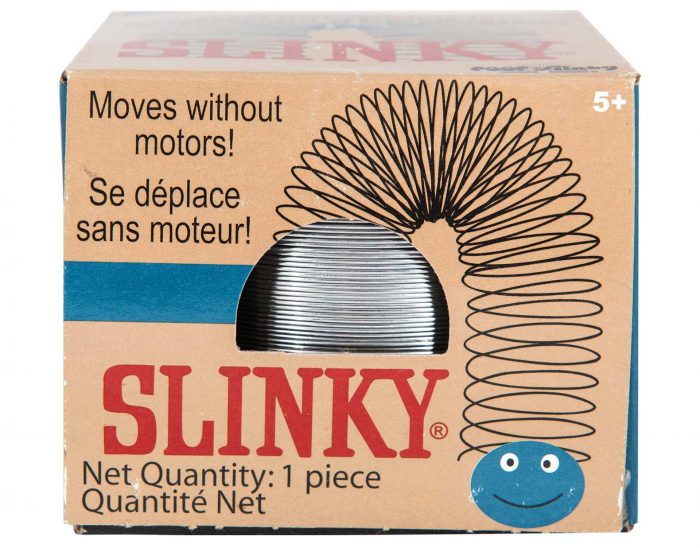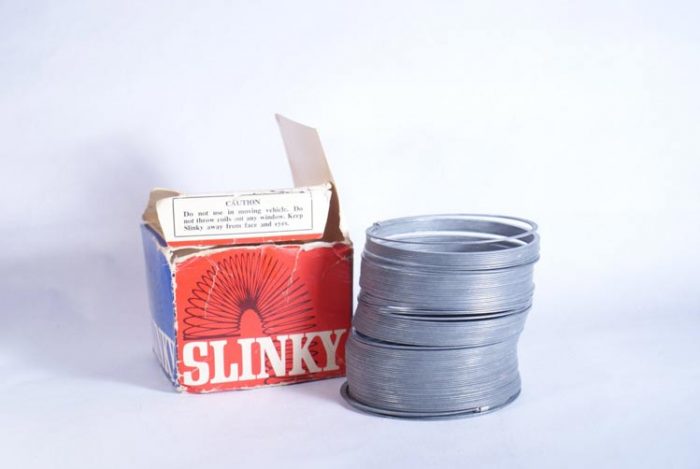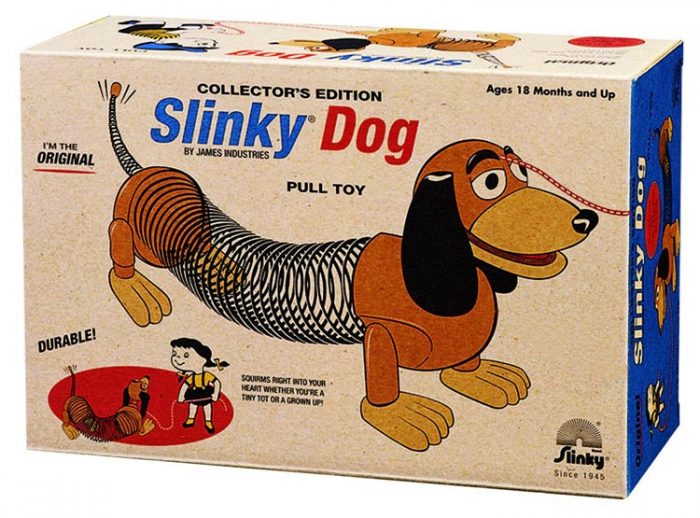“Everyone wants a Slinky!” exclaimed the original TV advertisement for this iconic toy in the 1950s, and that’s still true today. This simple yet compelling steel spring has entertained young and old for generations – but how did it come about and how are they made?

Inspiration springs
The story starts in 1943 when naval engineer Richard James was trying to create a way to use metal springs to protect sensitive equipment against sudden movement while at sea. Along the way, he knocked one of the springs off a shelf and noticed that it “walked” along a stack of books, off a table and then the floor before standing perfectly upright.
This is where inspiration struck. He reasoned that if he made a small version of this spring that moved in that uncanny way, it could make an irresistible children’s toy.
Back home, Richard started tinkering with metal springs of all shapes and sizes to get something that was flexible enough to move freely, had the right tension to keep stable, and was lightweight and strong enough for children to play with. Oh, and it also had to be cheap enough to mass produce.
After several years of trial and error he, along with his wife Betty who was initially sceptical of the idea, settled on the design of a two and a half-inch tall stack of high-grade blue-black Swedish steel with 98 coils. Giving it a simple nudge at the top of a stairwell would see it magically move. Betty dubbed it the Slinky and it was ready to take on the world.

Taking it to the streets
With a $500 bank loan, they hired a local steel machining shop to produce the initial run of 400 units that they packaged by hand and took to local retailers. Initial interest was low, until one store – Gimbels in Philadelphia – agreed to let the pair set up a demonstration in their toy department.
Once kids saw the Slinky in motion, they were hooked. All 400 units were sold in under two hours and the pair used that initial success to take the Slinky to the 1946 Toy Fair where it became a bona fide hit.
How Slinkys are made
Soon after they found success, Richard James engineered a machine that could make a new Slinky in seconds, and the production line kept cranking them out for decades.
First, a fine spring steel wire, made from a high carbon steel with a coating measuring just over a tenth of a centimetre in diameter, is fed into a machine. Each slinky is made from over twenty metres of wire, compressed into a small form.
The machine flattens and winds it on its end before its cut to the right length. A spindle is used to wind the wire to a preset shape to keep it uniform. Good quality spring wire, once wound, never loses its shape.
It’s a simple process and while the materials may have changed over time, the same basic method for their creation has remained steadfast.

Slinky in motion
So, how exactly do Slinkys work?
The Slinky is more than a piece of bent steel – it’s a complex example of physics in action.
By using so many coils, movement that is happening at one end of the Slinky takes time (up to several seconds, depending on the amount of force being applied) to propagate to the other end. This is known as wave motion.
Additionally, the centre of gravity in a Slinky is lower than a rigid coil of the same size. This means that when you tap the top of the Slinky, the top end moves almost independently of the lower end, and the pull of gravity transfers all the way through the coil to make it appear like it’s walking.
Finally, the lower centre of gravity keeps the Slinky upright when it’s run out of momentum to keep walking, so it’s ready for its next use.
The Slinky of today
Even with high-tech gadgets getting cheaper every year, Slinkys are still found on store shelves around the world today. In 1998 Betty James, who had taken over the company 30 years previously after divorcing Richard, sold the company after amassing 300 million Slinky sales globally.
During that time there had been plenty of Slinky variations that hit the market, including:
- Slinky Dog, as made popular in the Toy Story series of movies
- Plastic Slinky, which were safer to use and came in a wild variety of colours
- Slinky Crazy Eyes, a wacky pair of glasses with moving eyes
The Slinky is a testament to how a simple idea, along with a cheap price point and clever marketing, can still find favour today. At ShapeCUT we’re all about making your great idea stand out among the crowd, so contact us today to see how we can help your business become the next Slinky.

Contact Us To Find Out More
We ensure a fast, exact and economical steel solution for our clients. Call our team today to discuss your steel cutting and metal processing requirements.
Get Our Newsletter
Contact details
121 Mica Street, Carole Park,
QLD, 4300, AUSTRALIA
Freecall: 1800 SHAPECUT (1800 742 732)
Telephone: (07) 3271 5600
Facsimile: (07) 3271 5454
Email: sales@shapecut.com.au
Accredited Profile Cutting

Profile Cutting
Metal Processing Services
©2025 ShapeCut | Website design Brisbane by iFactory | Privacy Policy | Search | Sitemap



